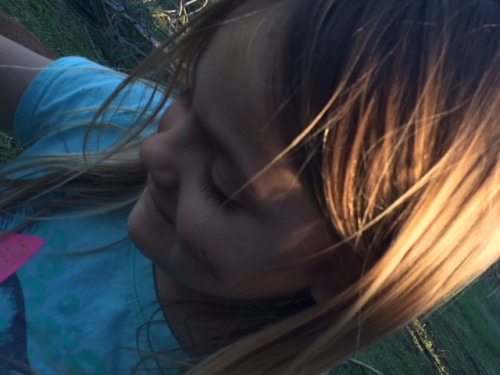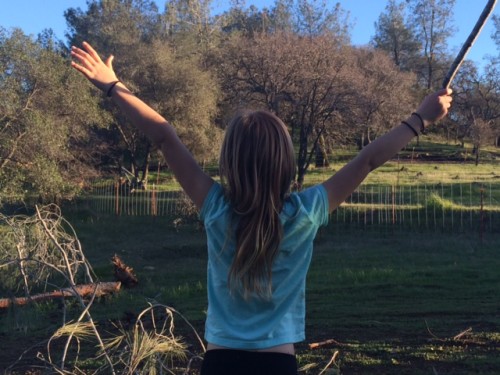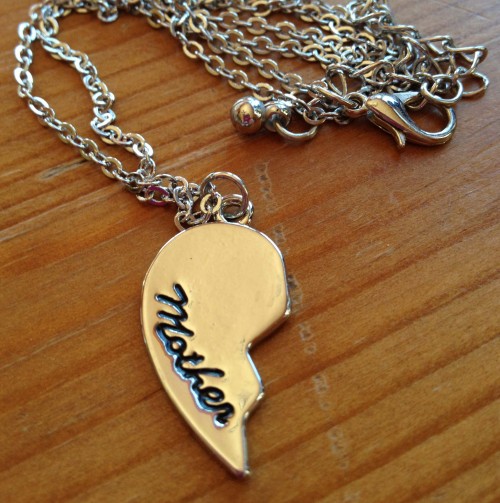Note: I realize this topic gets people riled up – all I ask is that you read to the end before commenting. Thank you!
—–
I’ve kept my mouth shut and my fingers still as the vaccination battle has raged and burned anew here in California and elsewhere across the nation over the past several weeks. I’ve read articles, observed heated debates, seen some people show compassion and others spew hateful venom.
I read the heartfelt plea for parents to immunize, penned in the 1980’s by beloved author Roald Dahl who lost his young daughter to the measles in 1962. My heart hurt when I saw photos of the infant infected with measles by unknowingly being in the waiting room of a doctor’s office with an unvaccinated child whose parents didn’t know what was wrong.
Sitting silently here at home, I felt empathy for both sides of this passion-filled argument because I am a mother who is not at all sitting on the fence between the two – I occupy both sides at the same time.
My eldest child is fully vaccinated and my youngest is not. With a family history of having severe reactions to high doses of medications, ~ For example, I went into anaphylaxis from a large dose of Benadryl at age 5, and ever since, have been allergic to the medication doctors give in order to control allergic reactions. Irony, anyone? ~ I chose to break 11 year old Ali’s immunizations into one and two dose applications over a series of appointments when she was little. Sure, it meant more trips to the doctor and more co-pays, but her doctor, who had also been my physican for a number of years, agreed that it wouldn’t hurt, especially if it calmed my worries and kept her safe. It seemed to be a very reasonable compromise between vaccinating and not wanting to harm my child with overexposure.
When Blythe came along, our insurance coverage was with an HMO that would not allow me to break up the inoculation schedule. I offered to pay for the office visits myself and even the vaccinations, if necessary, but they refused. When I then said I would take my two month old baby to see our former doctor and just pay out of pocket, they wouldn’t let me leave. By the time they finally coerced me into allowing them to give her the full set of shots, the room was filled with several nurses and every pediatrician on staff, all of them telling me I was endangering my child. Although they never threatened to call child protective services, they let me know that they all felt my parenting was not only questionable but negligent.
On that day, I allowed medical professionals to bully me into ignoring my maternal instincts, and I have made sure to never let that happen again.
The problems that began shortly after that couldn’t be directly tied to the vaccinations at the time. Blythe was fussy and had a weird rash, she had screaming fits, her body would tense up and her eyes would bug out, but then she would be fine. The doctor’s office said she had colic and eczema, and when the majority of the symptoms faded after a week or two, I felt okay about letting them give her the full course of shots. Crisis averted, I was just an overprotective mother worrying for nothing, right? Little did I know that her Central Nervous System had reacted to the preservatives in the vaccines and was on the verge of waging war on my sweet baby’s body with the slightest provocation.
I delayed Blythe’s second set of immunizations by a few weeks because we were celebrating my 30th birthday with friends and family, and would be traveling. At 5 months old she was still having occasional screaming fits, but was otherwise a healthy, happy baby, developing on or ahead of schedule in every way.
And then. I took her for her second round of vaccinations and our world spun upside down, around and in any possible direction other than right side up. It remained that way for the next three years and I lived every moment of every day with the knowledge that I allowed my child to be injected with something that acted as a catalyst for more pain, more heartache, more turmoil than a child ~ any child, mine or yours or that kid over there, even the one who acts like a complete asshole half the time ~ should ever have to endure.
My point is this: We all love our children. We want the best for them, to keep them safe and healthy and happy. The great majority of us would never knowingly do anything to cause harm to our babies. Only two percent of the population has an adverse reaction to vaccinations, most of them mild, and that is an amazingly low rate, especially when we consider how many people, scores of them children, died or had long term complications from the illnesses that these vaccinations not only protect against, but have nearly eradicated in our modern world.
But. But… When your child is in the two percent; when it is your child whose body is tortured every day from within and there is nothing you can do to help or soothe; when your softest touch brings her pain; when her health problems increase with regularity and a flu that any other child would get over in 24 hours is life threatening; when she reaches an age where she can speak and describes the way she feels as being on fire inside; you can’t help but relive that moment in your mind – that moment when you held your happy, healthy baby on your lap and watched her get her vaccinations ~ created to keep her healthy! ~ and as much as you want to, with every fiber of your being, you know that you can’t take it back. You can’t travel back in time and do it a different way, or not do it at all, because even that would be a better choice than this living hell; you just watch your child live with the pain. And you? You live in fear because danger lurks everywhere, threatening to take her from you without a moment’s notice.
Close your eyes for a moment and imagine that life for your child, and for yourself, and before you come back to reality, take a deep breath and be thankful that your child is among the 98 percent. You don’t ever want to know what it’s like on the other side.
If you were to meet 7 ½ year old Blythe today, or for those of you who know her, to just observe her now, you would never suspect that she is the child I described above. Believe me when I tell you that I gave the slightest, most gentle description of what life was like for her. For us.
Blythe is among the few who have been able to make a full recovery, after some other underlying health issues were discovered and managed. She is, once again, the happy, healthy child I held in my arms so many moons ago. In the years now that she has been well, I have made sure to thank my lucky stars on a daily basis for this opportunity to have a second chance at keeping her healthy.
I’ve wrestled with the choices several times over the past few years – should we take a chance and try to inoculate her again, now that she’s healthier, older and stronger?
Would it be safer for her to have a known thing – the vaccinations – in her allergist’s office so that we could hopefully deal with the possibility of anaphylaxis quickly enough to keep her health from plummeting back down into the abyss?
Or would it be safer to hope that she won’t come into contact with the illnesses the vaccines protect against and not risk purposefully pushing her into that fiery inferno that we both remember so well, that still haunts our dreams, even now?
But here we are with a measles outbreak. Blythe is still unvaccinated and is at significant risk. Her half-sister is three months old, too young to be vaccinated, and we have her to think about, as well.
I can see both sides of the argument. The protective mother of a child who medically could not be immunized rages at the fact that parents who chose not to vaccinate for non-medical reasons have allowed our herd immunity to break apart in such a way. I am relying on you, village, to help protect my child and you are doing a shitty job of holding up your part of the bargain!
On the other hand…. I do know what an adverse reaction to vaccines can bring. I have seen it and lived it and watched my child suffer, and wished a billion times that I hadn’t let her be fully immunized that day. If I had known what could happen, ~ what could really, really happen ~ to my child, I would have feared it, too, more than anything I’ve ever feared in my life.
Which brings me to my final point. Blythe and I, along with the other parenting figures in her life, have decided that she needs to be vaccinated. At this point in time, the risk of catching and/or spreading a life threatening disease is too great.
Can I take a moment to tell you how wonderful and brave my 7 year old daughter is? And can I also tell you that for the past few weeks, as we’ve discussed this choice amongst ourselves and with her doctors, I have not been able to take a full, deep breath because my heart has taken up residence in my throat?
I am terrified. I know what can happen. I didn’t read it in an article or see it on television or hear a story about someone’s roommate’s brother’s friend’s baby. I saw it with my own eyes and lived with it. And yet, we are going to vaccinate our child because it’s what’s best for her, and for the rest of the population.
Talk about taking one for the team.
For those who have not vaccinated out of fear of what may happen, or because of previous adverse reactions, please know that there are Pediatric Allergists out there who have developed allergy tests for each and every vaccination. Blythe will undergo an allergy test prior to every inoculation, which will be administered in the allergist’s office, one at a time. If the tests indicate an allergy to any one of the traditionally used vaccination formulas, though, we still have options!
Organic vaccines with no preservatives (which are what cause most problems) are now available, and although they can be quite expensive, an allergic reaction to the test means that insurance companies must cover them. They are mixed and kept on ice as they are overnighted, and must be administered within 24-48 hours of their creation. Today, right now, in this privileged, scientifically advanced world we live in, there is no reason for healthy children* to remain unvaccinated. Research and find a way. If I can do it, you can, too.
When I broke the news to Blythe that the allergist’s office could absolutely get her caught up on vaccinations and could also make certain she wouldn’t have an allergic reaction (as opposed to attempting to treat a possible reaction), she gave me the biggest smile I’ve ever seen, threw her arms around my neck, and together, we cried.
Of all the tears we’ve shed over this battle in the past 7 years, at last… we are crying tears of joy! The world is finally hers.
*I specified healthy children because there are some with medical issues and compromised immune systems that would not be able to handle immunizations of any kind. These are the kids we need to help protect!


